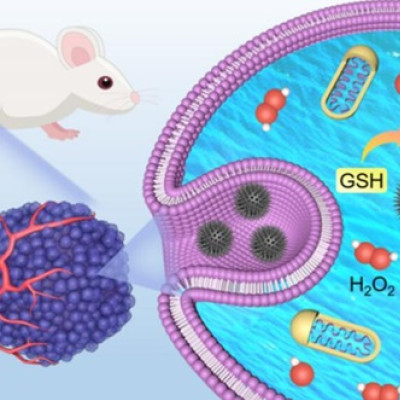Background
84% of the currently approved COVID-19 vaccines in the USA are virus-based vaccines: they contain inactivated or attenuated versions of the virus that trigger the immune system to begin creating antibodies. They are effective but run the risk of reactivation, allergic reaction, and other side effects. Vaccines can display a viral protein that will produce an effective immune response without containing the rest of the virus to avoid such side effects. However, this can result in a lesser reaction, as the virus proteins are not as densely positioned and do not show the same repetitive pattern as the full virus would.
The study
In the study published in PLOS Pathogens, the researchers created a different type of vaccine designed to mimic the virus's dense antigen display and repetitive patterns to stimulate antibody production without the risk of adverse side effects. By engineering a protein scaffold that presents multiple copies of the RBD of the spike protein of SARS-CoV-2, they have created a vaccine that induces a five-fold increase in neutralizing antibody production compared to a basic viral protein vaccine.
It emerged early in the research into SARS-CoV-2 that a key element of the higher virality and mortality of the most recent outbreak than other coronaviruses was the higher affinity from the human cell surface receptor angiotensin-converting enzyme 2 (ACE2). The RBD S1 uses this cell surface receptor to bind to human cells. It has proven a promising vaccine target - however, this domain is often hidden within the spike to avoid the immune response.
To trigger a strong enough immune reaction to provide functional immunity, a lumazine synthase with an N-terminal protein A tag was used as a backbone for the virus-like protein, as it spontaneously assembled into a useful structure when purified. After confirming that the SARS-CoV-2 S1 subunit (with a C terminal Fc tag) would successfully bind to the lumazine synthase structure, the scientists used gel-filtration chromatography to purify the complex. They observed that the spherical shape of the structure remained while a surface similar to SARS-CoV-2 and previous nanoparticle-based vaccines developed. Finally, incubating this complex with mouse serum showed that not only did the S1 subunit domain still bind to ACE2, but it also remained attached to the virus-like nanoparticle. Two vaccine versions were produced - one with the lumazine synthase produced by mammalian cells and one produced by bacterial cells.
In initial mouse testing, the new vaccine stimulated the production of five times as many S1 subunit RBD antibodies and led to the mouse sera preventing the entry of the virus into the cell via binding of ACE2 more effectively. These results were seen consistently over time, with results remaining constant on days 10, 40, and 70. In further testing, mice vaccinated with the virus-like nanoparticle avoided the lung damage and acute respiratory distress syndrome seen in mice vaccinated with a placebo. Potentially more import, the vaccine's increased effectiveness could also be seen against generated pseudoviruses, suggesting that it will remain effective against the increasingly dangerous SARS-CoV-2 variants.
Conclusion
The authors are hopeful that the vaccine can begin further testing quickly. The increased effectiveness against SARS-CoV-2 variants compared to existing vaccines could help speed global recovery from the pandemic and avoid further deaths. However, the bioengineering technique used to create the virus-like nanoparticle does have some downfalls: the Fc tag may bind to receptors in some immune cells and affect immunogenicity, and the attraction between the Fc tags on the nanoparticle and protein A tags on the viral proteins can eventually lead to the displacement of the viral proteins. Despite this, the vaccine has been shown to provide near-total protection in mice and could become a powerful tool against COVID-19.
Read the original article on News Medical.







